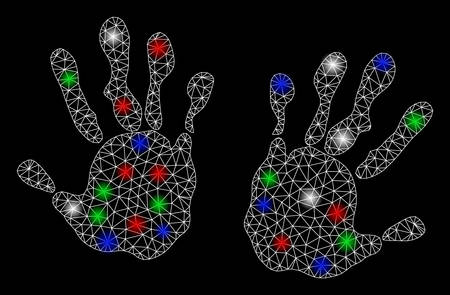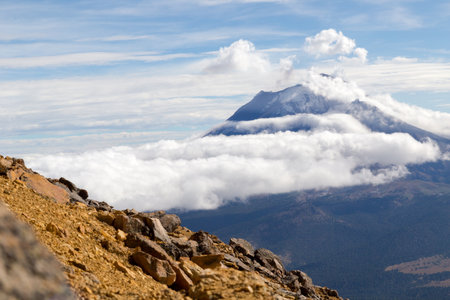Breaking Stereotypes: Representation Matters on the Trails
For many years, the face of outdoor adventure in America has often looked the same. However, Black, Latino, and Indigenous hikers are changing that narrative—one step at a time. Seeing people from diverse backgrounds out on the trails is not just inspiring; it’s necessary for building a more welcoming outdoors for everyone.
Why Visibility Matters
When hikers from underrepresented communities share their experiences, it does more than challenge old stereotypes. It helps others see themselves as part of the outdoor world too. This visibility can break down barriers, such as the idea that hiking is only for certain groups, and encourages participation from a wider range of people.
Impact of Representation
| Group | Common Stereotype | How Visibility Changes the Narrative |
|---|---|---|
| Black Hikers | “Black people don’t hike” | Shows diversity in interests and inspires new generations to try hiking |
| Latino Hikers | “Latinos aren’t interested in the outdoors” | Highlights family traditions and community connections with nature |
| Indigenous Hikers | “Indigenous people only connect with land through tradition” | Presents modern Indigenous perspectives and ongoing relationships with nature |
The Ripple Effect on Community Participation
When trail users see people who look like them or share their background, it sends a strong message: You belong here too. This sense of belonging boosts confidence and motivates others to explore parks, forests, and mountains. Over time, it helps build diverse communities that care about protecting natural spaces for everyone.
2. Personal Journeys: Stories from Trailblazers
Breaking Stereotypes on the Trail
For a long time, hiking and outdoor adventures in the U.S. have been seen as activities mostly for white communities. But today, Black, Latino, and Indigenous hikers are changing that story. Their journeys are not just about reaching new peaks—they’re about challenging stereotypes, building community, and opening doors for future generations.
First-Hand Accounts: Voices from the Trail
| Name | Background | Experience Shared |
|---|---|---|
| Jasmine Taylor | Black American | Started hiking to find peace after college stress. Now leads group hikes for young women of color, encouraging them to claim space outdoors. |
| Carlos Ramirez | Latino American | Grew up in LA with little access to nature. Joined a local hiking club to reconnect with his roots and now mentors teens in urban neighborhoods. |
| Sierra Whitefeather | Navajo Nation | Takes her family on ancestral trails to honor tradition. Shares stories online to educate others about Indigenous ties to the land. |
Paving the Way for Others
These trailblazers aren’t just enjoying nature—they’re inspiring others by showing what’s possible. Many lead group hikes, create online communities, and share their stories through social media or workshops. They help break down barriers by:
- Creating safe spaces for people of color outdoors
- Sharing tips on gear, safety, and finding accessible trails
- Celebrating cultural heritage through storytelling and events
- Advocating for better representation in outdoor brands and media
The Ripple Effect of Representation
Every time someone sees a hiker who looks like them in a national park or on Instagram, it sends a powerful message: “You belong here too.” These personal journeys make it easier for others to take their first steps into the wild, knowing they’re not alone.

3. Barriers and Bridges: Overcoming Obstacles in Outdoor Spaces
The outdoors is a space for everyone, but for Black, Latino, and Indigenous hikers in the U.S., getting outside has often come with unique challenges. These communities have faced both historical and present-day obstacles that make it harder to access trails, parks, and wilderness areas. Lets look at some of these barriers and the creative ways people are building bridges toward greater inclusion.
Historical Barriers
For many years, laws and social norms kept people of color away from public lands. Segregation in the Jim Crow era meant Black families couldn’t safely visit many parks. Latino and Indigenous communities often saw their ancestral lands taken away or made inaccessible by government policies.
| Community | Historical Barrier |
|---|---|
| Black Americans | Segregation in parks and recreation; lack of representation in outdoor media |
| Latino Americans | Language barriers; exclusion from land management decisions |
| Indigenous Peoples | Loss of ancestral lands; restrictions on traditional practices |
Current Obstacles
Today, there are still hurdles that keep these groups from enjoying the wild freely. Some common challenges include:
- Lack of transportation to parks or trailheads
- High costs for gear and entrance fees
- Stereotypes about who “belongs” outdoors
- Few role models or leaders from their own communities in the outdoor industry
- Concerns about safety and discrimination on the trails
Building Bridges: Innovative Strategies for Inclusion
Despite these challenges, many Black, Latino, and Indigenous hikers are creating new paths forward. Here are some ways they’re making outdoor spaces more welcoming:
| Strategy | Description/Example |
|---|---|
| Outdoor Groups & Clubs | Organizations like Outdoor Afro, Latino Outdoors, and Native Women’s Wilderness host group hikes, workshops, and community events to connect people with similar backgrounds. |
| Cultural Storytelling on Trails | Telling stories of ancestors, local history, or environmental knowledge during hikes helps reclaim space and celebrate heritage. |
| Gear Libraries & Scholarships | Lending programs provide free or low-cost equipment; scholarships help cover costs for outings or training. |
| Bilingual Resources & Signage | Parks adding signs and materials in Spanish or Indigenous languages make navigation easier for more visitors. |
| Youth Programs & Mentorships | Youth-focused programs inspire kids to explore nature early on, with mentors who look like them. |
| Advocacy & Representation | Diverse voices are pushing for change in park policies and working with brands to show real representation in ads and campaigns. |
The Impact of These Efforts
By breaking down barriers and building new connections, these strategies help more people feel at home in America’s wild spaces. The movement is growing—one hike, one story, one community at a time.
4. Community Roots: The Importance of Culturally Relevant Outdoor Groups
Across the United States, a growing number of organizations and grassroots groups are making sure that everyone feels welcome on the trails. For Black, Latino, and Indigenous hikers, these groups provide more than just hiking buddies—they offer a sense of belonging, safety, and pride in their heritage.
Why Culturally Relevant Groups Matter
For many people of color, joining traditional outdoor clubs can feel intimidating or isolating. Thats where culturally relevant outdoor groups come in. These organizations create safe spaces for sharing stories, celebrating cultural traditions, and exploring nature together without judgment. They also work to break down barriers like language, cost, and access to gear.
Spotlight on Grassroots Organizations
| Organization | Focus | Region |
|---|---|---|
| Outdoor Afro | Empowering Black connections to nature through hikes, camping trips, and educational programs. | Nationwide |
| Latino Outdoors | Connecting Latino communities with the outdoors while honoring cultural heritage and bilingual experiences. | Nationwide |
| Indigenous Women Hike | Centering Indigenous voices and traditions through hiking, advocacy, and reclaiming ancestral lands. | Southwest & West Coast |
| NativesOutdoors | Lifting up Indigenous athletes, storytellers, and outdoor leaders; promoting sustainable recreation. | Nationwide |
| African American Nature & Parks Experience (AANPE) | Highlighting the history and presence of African Americans in parks and wild spaces. | Southeast & Mid-Atlantic |
How These Groups Empower Hikers
- Cultural Events: Organizing hikes during cultural holidays or significant dates.
- Mentorship: Pairing new hikers with experienced guides from similar backgrounds.
- Storytelling: Sharing personal journeys about overcoming stereotypes or challenges outdoors.
- Advocacy: Working to increase representation in park programming and leadership roles.
- Bilingual Resources: Offering trail information and guides in multiple languages.
The Ripple Effect Across America
The impact of these community-rooted groups is visible nationwide. More diverse faces are showing up on trails, families are discovering public lands together, and local leaders are inspiring the next generation to protect natural spaces. By supporting each other and lifting their voices, Black, Latino, and Indigenous hikers are not only changing who we see outdoors—they’re changing how we care for these wild places for everyone’s future.
5. Redefining the Landscape: Shaping the Future of Outdoor Adventure
The face of outdoor adventure in America is changing. As more Black, Latino, and Indigenous hikers step onto trails and share their experiences, they are helping to build a richer, more inclusive story about what it means to explore the wild. This new wave of diversity is shaping not only who enjoys the outdoors, but also how traditions are formed and passed on.
New Traditions on the Trail
Increased diversity among hikers has led to fresh ways of celebrating nature. For example, some groups blend cultural heritage with outdoor activities by hosting group hikes during special holidays or organizing trail clean-ups that include traditional music and food. These unique traditions make outdoor spaces feel welcoming for everyone.
Examples of New Outdoor Traditions
| Community | Tradition/Activity | Impact |
|---|---|---|
| Black Hikers | Juneteenth group hikes | Cultural celebration and education on the trails |
| Latino Hikers | Día de los Muertos nature walks | Honoring ancestors while connecting with nature |
| Indigenous Hikers | Land acknowledgment ceremonies before hikes | Respecting history and promoting stewardship |
Enriching the Outdoor Narrative
The stories told by diverse hikers are expanding our understanding of America’s wild places. Social media, blogs, and podcasts now feature voices that were rarely heard before. Through sharing personal challenges, triumphs, and family traditions, these adventurers are breaking down stereotypes and making it clear that everyone belongs outdoors.
How New Narratives Inspire Change
- Representation: Seeing people from all backgrounds hiking encourages others to join in.
- Education: Stories often teach about local history, environmental issues, and cultural practices.
- Community Building: New hiking groups create support networks for future explorers.
Inspiring the Next Generation
Youth programs and mentorships led by Black, Latino, and Indigenous hikers are inspiring kids who might never have considered hitting the trail. By providing gear, guidance, and encouragement, these leaders show young people that the outdoors is a place for them too.
Key Ways Diversity is Shaping Tomorrow’s Adventurers
- Youth hiking clubs introduce kids to local parks and trails.
- Mentorship programs pair experienced hikers with newcomers for support.
- Culturally relevant events celebrate heritage and build confidence in nature.
This growing movement is not just changing who hikes—it’s transforming what outdoor adventure looks like in America. As new traditions take root and stories are shared, the landscape becomes richer for everyone.


